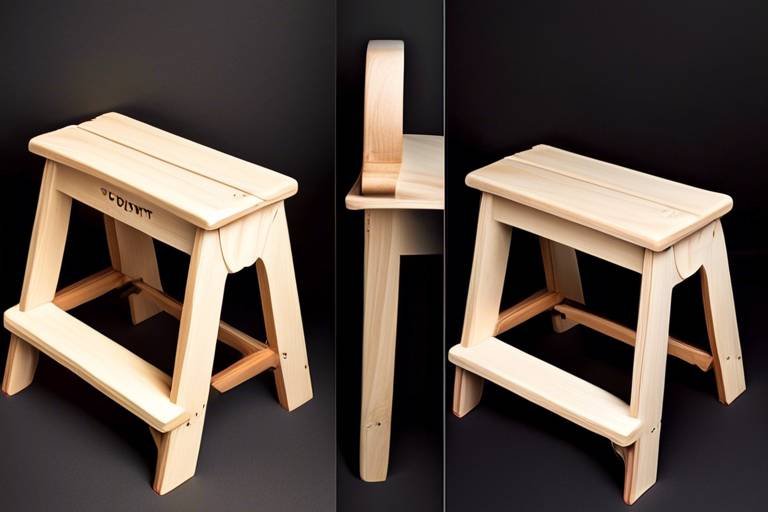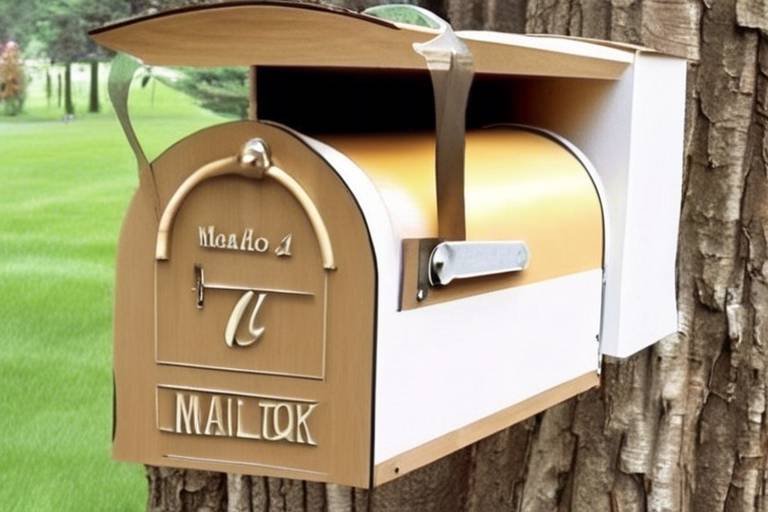Furnishing Your Room: DIY Wooden Bedside Tables
Are you tired of the same old boring bedside tables that just don't reflect your personality? Well, it's time to unleash your inner craftsman and create something truly unique! In this article, we'll explore the exciting process of making your own wooden bedside tables. Not only will you enhance your bedroom decor, but you'll also have a functional piece that showcases your style. Imagine the satisfaction of crafting a piece that not only serves a purpose but also tells a story—your story!
Creating a DIY bedside table is a rewarding project that allows you to express your creativity while adding a personal touch to your space. You don’t need to be a woodworking expert to get started; with the right guidance and tools, anyone can build a beautiful bedside table. Throughout this guide, we will cover everything from selecting the right wood to the final finishing touches. So roll up your sleeves, and let’s dive into the world of DIY woodworking!
First things first, let’s talk about the importance of choosing the right materials. The wood you select can greatly influence the durability and aesthetics of your bedside table. There are numerous types of wood available, each with its own unique characteristics. Whether you prefer the warmth of oak, the elegance of walnut, or the rustic charm of pine, the right wood can set the tone for your entire project.
Next, we’ll guide you through the essential tools and materials you’ll need to gather before embarking on your DIY adventure. From basic hand tools to power tools, being well-prepared will ensure your project goes smoothly. We’ll break down everything you need, making sure you’re equipped for success.
As we progress, we’ll touch on design inspirations that can help shape your bedside table’s aesthetic. Whether you lean towards a modern minimalist style or a cozy vintage vibe, there are endless possibilities to explore. Plus, we’ll discuss how to customize your table to fit perfectly with your bedroom decor—think colors, finishes, and even additional features like drawers or shelves.
Once you have your design in mind, we’ll provide a detailed step-by-step guide to building your bedside table from scratch. This includes essential preparation techniques, assembly methods, and finishing touches that will make your creation stand out. Remember, preparation is key! Properly cutting, sanding, and treating your wood will ensure a professional-looking finish.
Finally, we’ll wrap up with the finishing touches. The right stain or paint can dramatically change the look of your bedside table, while a good sealant will protect it from wear and tear. By the end of this article, you’ll be ready to create a stunning bedside table that not only meets your needs but also adds a touch of your personality to your bedroom.
So, are you ready to transform your bedroom with a DIY wooden bedside table? Let’s get started on this exciting journey of creativity and craftsmanship!
- What type of wood is best for a bedside table? While it depends on personal preference, hardwoods like oak and walnut are popular for their durability and aesthetic appeal.
- Do I need special tools for this project? Basic hand tools like saws and drills are essential, but power tools can speed up the process and make it easier.
- Can I customize my bedside table? Absolutely! You can choose your colors, finishes, and even add features like shelves or drawers.
- How do I ensure my measurements are accurate? Using measuring tools like a tape measure and square will help you achieve precision in your cuts and assembly.
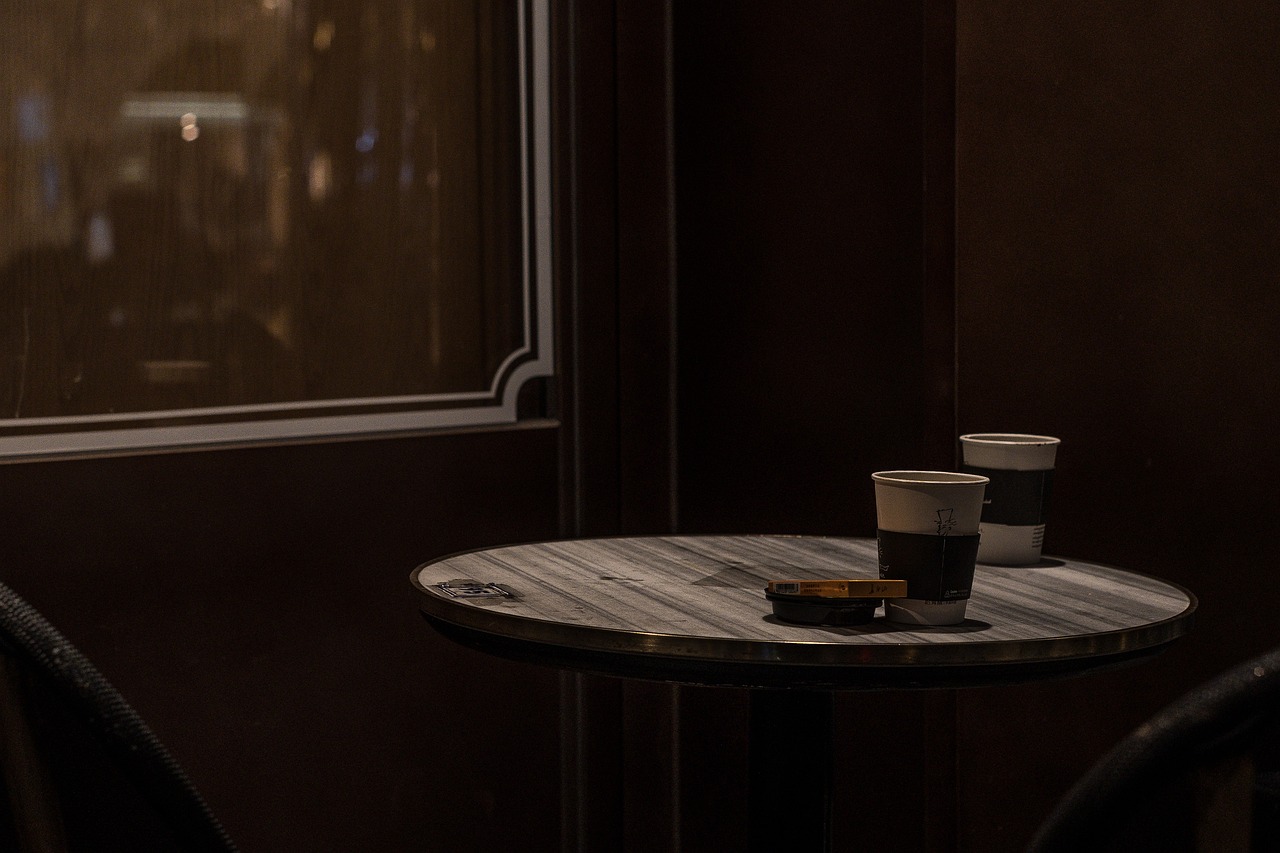
Choosing the Right Wood
When it comes to creating your own wooden bedside tables, is one of the most crucial steps in the process. The type of wood you select not only affects the durability and stability of your table but also plays a significant role in the overall aesthetic appeal of your bedroom. With so many options available, it can feel overwhelming to make the right choice. But don't worry! Let's break it down.
First off, you need to consider the characteristics of different wood types. Here are some popular options:
- Pine: This is a softwood that is both lightweight and affordable. It features a light color with a distinct grain, making it perfect for a rustic or farmhouse style.
- Oak: Known for its strength and durability, oak is a hardwood that can withstand the test of time. It comes in various shades, from light to dark, and has a beautiful grain pattern.
- Maple: Another hardwood, maple is known for its fine, consistent grain and light color. It's a great choice if you want a modern and sleek look.
- Walnut: This luxurious hardwood offers rich colors and a stunning grain. It's perfect for a sophisticated or contemporary design, but it comes at a higher price point.
Now that you have an idea of the types of wood available, consider the environmental impact of your choice. Opting for sustainable sources or reclaimed wood not only helps the planet but also adds a unique story to your furniture. Each piece of reclaimed wood has its own history, which can bring character to your bedside table.
Additionally, think about the finish you want for your bedside table. Some woods take stains and paints better than others, so if you're leaning toward a specific color or finish, make sure your wood choice aligns with that vision. For instance, pine may absorb paint differently than oak, which could affect the final look of your project.
In conclusion, choosing the right wood involves balancing aesthetics, functionality, and sustainability. Take your time to weigh the options, and remember that the wood you select will be the foundation of your beautiful new bedside table. So, which wood speaks to you? Your choice will not only enhance your bedroom decor but also provide a piece of furniture that you can cherish for years to come.
What type of wood is best for a bedside table?
The best type of wood depends on your style and budget. Oak and walnut are great for durability and aesthetics, while pine is more affordable and lightweight.
Can I use plywood for my bedside table?
Yes, plywood can be a suitable option, especially if you’re looking for a budget-friendly choice. Just ensure it’s of good quality and properly finished.
How do I treat the wood before assembly?
Sanding the wood to a smooth finish and applying a wood conditioner can help prepare it for staining or painting, ensuring a more even application.

Essential Tools and Materials
Before diving into the exciting world of DIY wooden bedside tables, it’s crucial to gather all the essential tools and materials that will make your project a breeze. Think of this step as laying the foundation for a sturdy house; without the right tools, your creation might not stand the test of time. So, let’s break down what you’ll need to get started!
First off, you’ll require some basic hand tools. These are the backbone of any woodworking project and will help you cut, shape, and assemble your bedside table effectively. Some of the must-have hand tools include:
- Hand Saw: Perfect for making precise cuts.
- Chisels: Ideal for carving and shaping wood.
- Hammer: Essential for driving nails and assembling pieces.
- Screwdriver: Necessary for fastening screws securely.
In addition to hand tools, you’ll also want to have a few measuring tools on hand. Accurate measurements are key to ensuring that your bedside table turns out just right. A good quality tape measure, square, and level will help you achieve those perfect dimensions. Remember, a small mistake in measurement can lead to a big problem down the line!
Now, let’s not forget about power tools. While they’re not strictly necessary, they can significantly speed up the woodworking process and make your life easier. A power drill, for example, can save you time when drilling holes and driving screws. Other useful power tools include:
- Orbital Sander: For smoothening surfaces quickly.
- Jigsaw: Excellent for cutting curves and intricate designs.
- Table Saw: Perfect for making straight cuts with precision.
Once you have your tools sorted, it’s time to gather your materials. The type of wood you choose will greatly affect the final look and durability of your bedside table. Popular choices include pine for its affordability, oak for its strength, and walnut for its rich color. You’ll also need wood glue, screws, and finishing supplies like sandpaper and varnish to complete your project.
Here’s a quick overview of the essential tools and materials you will need:
| Tool/Material | Purpose |
|---|---|
| Hand Saw | For making precise cuts |
| Chisels | For carving and shaping wood |
| Hammer | For driving nails |
| Screwdriver | For fastening screws |
| Power Drill | For drilling holes and driving screws |
| Wood Glue | For bonding pieces together |
| Sanding Supplies | For smoothing surfaces |
| Finishing Supplies | For protecting and beautifying the wood |
With your tools and materials in hand, you’re all set to embark on this creative journey. Remember, the right preparation can make all the difference in your DIY project, turning a simple idea into a stunning piece of furniture that reflects your personal style.
Q: What type of wood is best for a bedside table?
A: It depends on your preference! Pine is great for beginners due to its affordability and ease of use, while hardwoods like oak and walnut offer durability and a beautiful finish.
Q: Do I need power tools for this project?
A: While power tools can make the process faster and easier, you can definitely complete your bedside table using only hand tools if you prefer.
Q: How long does it take to build a bedside table?
A: The time can vary based on your experience and the complexity of your design, but you can generally expect to spend a few hours to a couple of days on the project.
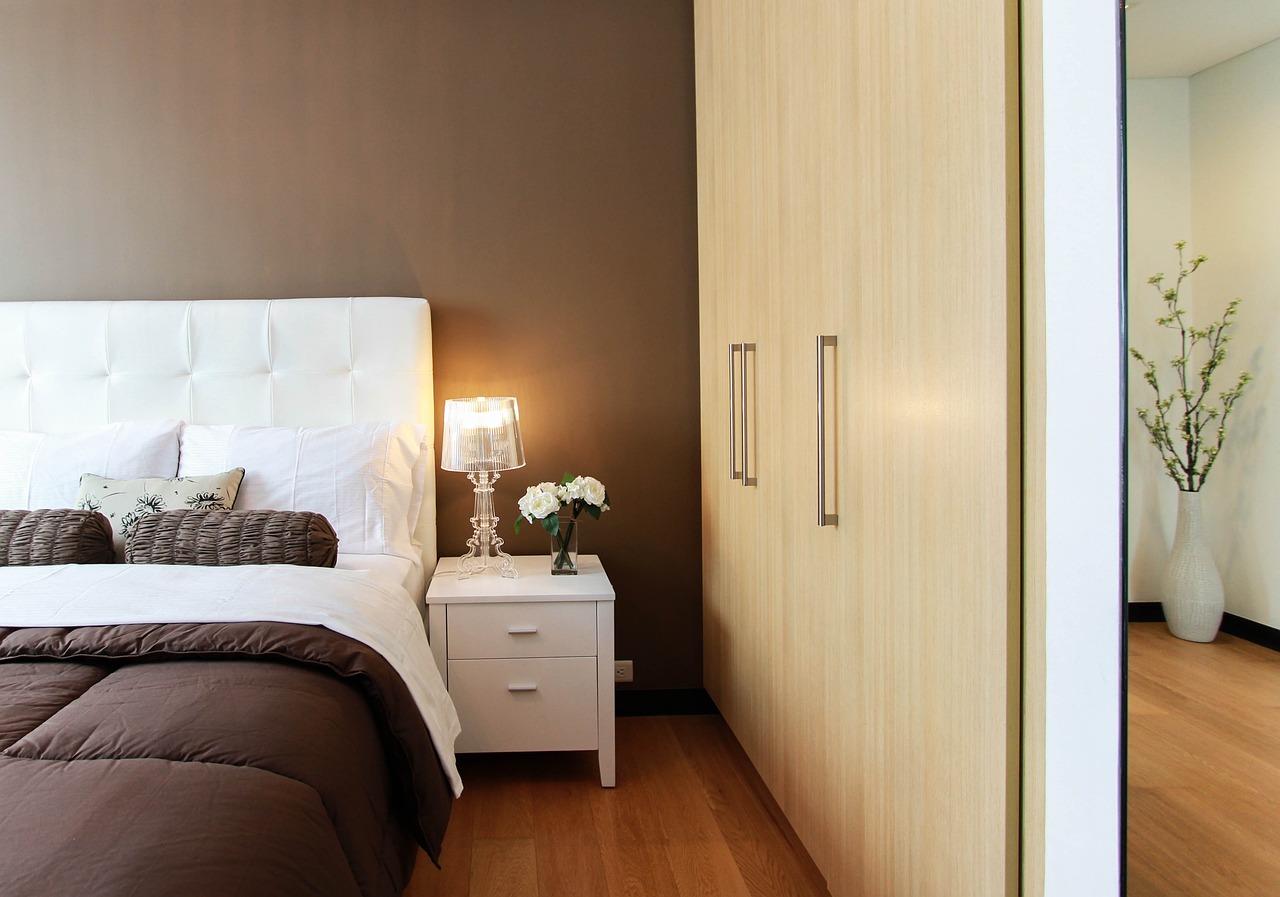
Basic Hand Tools
When diving into the world of DIY woodworking, having the right tools is like having a trusty compass on a road trip; it guides you to your destination with ease and precision. In this case, the destination is a beautiful, handcrafted bedside table that adds charm to your bedroom. Let’s explore the essential hand tools you'll need to embark on this creative journey.
First and foremost, a hand saw is a must-have. Whether you opt for a traditional panel saw or a more specialized dovetail saw, this tool will allow you to make clean cuts in your wood. Think of it as the magic wand that transforms lumber into the pieces you envision. But don’t just grab any saw; consider the type of cuts you’ll be making. For instance, a crosscut saw is perfect for cutting across the grain, while a rip saw is designed for cutting along it.
Next up is the chisel. This tool is like the sculptor’s chisel, allowing you to carve out details and refine edges. With a good set of chisels, you can create grooves for joints or even add decorative elements to your bedside table. Remember, a sharp chisel is a happy chisel, so keep them honed for the best results.
Another essential tool is the hammer. This isn’t just any hammer; a claw hammer is ideal for driving nails and removing them when necessary. Think of it as the heartbeat of your project, providing the force needed to bring your pieces together. Pair it with a set of nails that are appropriate for your wood thickness to ensure a solid assembly.
Don’t forget about the square. This tool is crucial for ensuring your cuts are straight and your joints are square—hence the name! A framing square or a combination square can help you measure and mark accurately, preventing any awkward angles that could compromise the integrity of your bedside table.
Lastly, a measuring tape is indispensable. It’s the tool that ensures you won’t end up with a table that’s too wide for your space or too short for your needs. Accurate measurements can save you from a world of frustration, so make sure you always have this tool handy.
To summarize, here are the basic hand tools you should gather:
- Hand Saw
- Chisel
- Hammer
- Square
- Measuring Tape
With these tools at your disposal, you’re well on your way to crafting a stunning bedside table that reflects your personal style. Remember, the journey of woodworking is as rewarding as the final product, so take your time and enjoy the process!
Q: What is the best type of wood for a bedside table?
A: Popular choices include oak for its durability, pine for its affordability, and walnut for its rich color. Choose based on your style and budget!
Q: Do I need power tools for this project?
A: While power tools can speed up the process, basic hand tools are sufficient for building a bedside table. Start with what you have!
Q: How can I ensure my measurements are accurate?
A: Always double-check your measurements before cutting. Using a measuring tape and a square will help maintain precision.
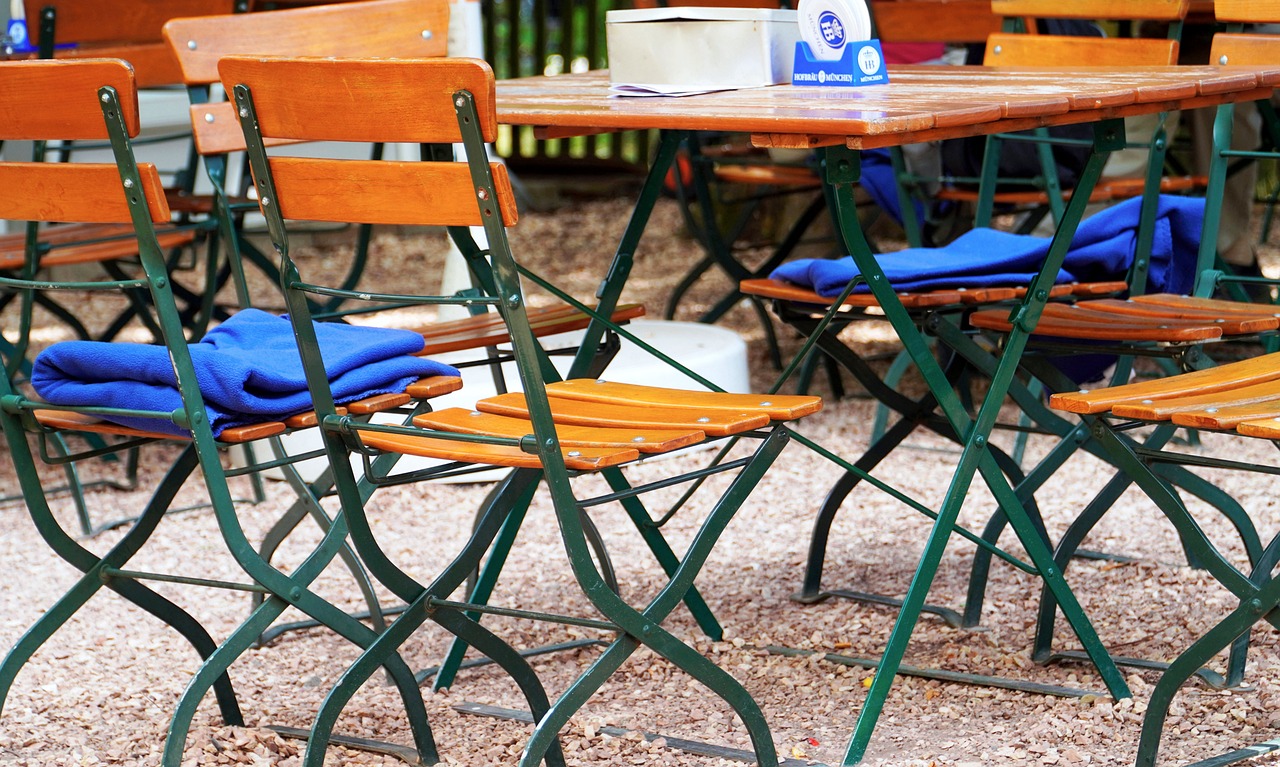
Saws and Drills
When it comes to woodworking, saws and drills are your best friends. They are the tools that help transform raw wood into the beautiful pieces of furniture you envision. But with so many options available, how do you choose the right ones for your DIY bedside table project? Let's break it down.
First off, let’s talk about saws. There are several types of saws that can be used for cutting wood, each serving a unique purpose:
- Hand Saw: A classic choice for simple cuts, great for beginners.
- Circular Saw: Perfect for making straight cuts quickly and efficiently.
- Miter Saw: Ideal for precision cuts, especially at angles, which is crucial for corners.
- Jigsaw: Excellent for cutting curves and intricate designs.
Choosing the right saw depends on the cuts you need to make. For instance, if you’re looking to create angled cuts for a more intricate design, a miter saw would be the way to go. On the other hand, if you need to make straight cuts for the tabletop, a circular saw will save you time and effort.
Now, onto drills. A good drill is essential for creating holes for screws, dowels, or just about any assembly you might need. Here are a few types of drills you might consider:
- Cordless Drill: Offers portability and convenience, perfect for moving around your workspace.
- Drill Press: Provides precision and stability for more professional results.
The cordless drill is often favored for DIY projects because of its versatility and ease of use. It allows you to maneuver freely without being tethered to an outlet, making it perfect for working in different areas of your home. However, if you’re looking for precision, a drill press can make all the difference in achieving that perfect hole every time.
When using saws and drills, safety should always be your top priority. Always wear protective eyewear and follow the manufacturer's instructions. Additionally, ensure that your workspace is clean and well-lit to avoid accidents. Remember, a well-prepared workspace can make all the difference in your woodworking experience.
In summary, having the right saws and drills can significantly enhance your woodworking project, making it easier and more enjoyable. By choosing the right tools for your specific needs and taking necessary safety precautions, you’ll be well on your way to creating a stunning bedside table that reflects your personal style.
Q: What type of saw is best for beginners?
A: A hand saw is often recommended for beginners due to its simplicity and ease of use. However, a circular saw can also be a good choice for those looking to make straight cuts quickly.
Q: Can I use a regular drill for woodworking?
A: Yes, a regular cordless drill is perfectly fine for most woodworking projects, especially for driving screws and making small holes. For larger holes or more precise work, consider a drill press.
Q: How do I ensure my cuts are straight?
A: Using a straight edge or a guide can help you make straight cuts. For power saws, many models come with built-in guides that assist in maintaining straight lines.

Measuring Tools
When it comes to woodworking, precision is key. The right measuring tools can make or break your project, and that’s especially true for building your own bedside table. Imagine trying to fit a square peg into a round hole—frustrating, right? That’s what happens when your measurements are off. So, let’s dive into the essential measuring tools you’ll need to ensure your bedside table turns out just as you envisioned.
First on the list is the tape measure. This handy tool is a must-have for any DIY project. With its flexible design, a tape measure allows you to measure distances accurately, whether you're working in tight spaces or across larger areas. When using a tape measure, make sure to pull it taut for the most accurate reading. A good tip is to double-check your measurements before making any cuts—after all, it’s better to measure twice and cut once!
Next, consider investing in a combination square. This tool is fantastic for checking both 90-degree angles and measuring lengths. It’s like having an extra pair of eyes to ensure your cuts are straight and your joints are tight. When using a combination square, remember to align the ruler with the edge of your wood for precise marking.
Another essential tool is the speed square, which is perfect for marking angles and cutting straight lines. This triangular-shaped tool is a lifesaver when you want to create angled cuts for your bedside table legs or any other part of the design. Just place the square against the wood, and you’ll have a perfect line to follow with your saw.
For those who want to take their accuracy to the next level, a digital caliper can be a game-changer. This tool provides precise measurements down to the millimeter, which is especially useful for intricate designs or when working with thinner pieces of wood. A digital caliper is easy to read and can help you achieve that professional finish you’re after.
Lastly, don’t forget about the level. Once your bedside table is assembled, a level will help ensure that everything is straight and even. There’s nothing worse than a wobbly table! Place the level on top of your table, and adjust the legs as necessary until the bubble is centered.
In summary, having the right measuring tools can make your DIY project a breeze. Here’s a quick recap of the must-haves:
- Tape Measure
- Combination Square
- Speed Square
- Digital Caliper
- Level
By incorporating these tools into your woodworking arsenal, you’ll set yourself up for success. Remember, the goal is to create a beautiful and functional bedside table that reflects your personal style. So, take your time, measure carefully, and enjoy the process of bringing your vision to life!
Q: What is the best wood to use for a bedside table?
A: The best wood often depends on your style and budget. Popular choices include pine for affordability, oak for durability, and walnut for a luxurious look.
Q: Do I need power tools to build a bedside table?
A: While hand tools can suffice, power tools can make the process faster and easier. Consider using a power saw and drill for efficiency.
Q: Can I customize my bedside table?
A: Absolutely! You can customize the size, color, finish, and even add features like drawers or shelves to make it uniquely yours.
Q: How long does it take to build a bedside table?
A: The time required can vary based on your experience and the complexity of your design, but you can generally expect to spend a few hours to a couple of days on the project.
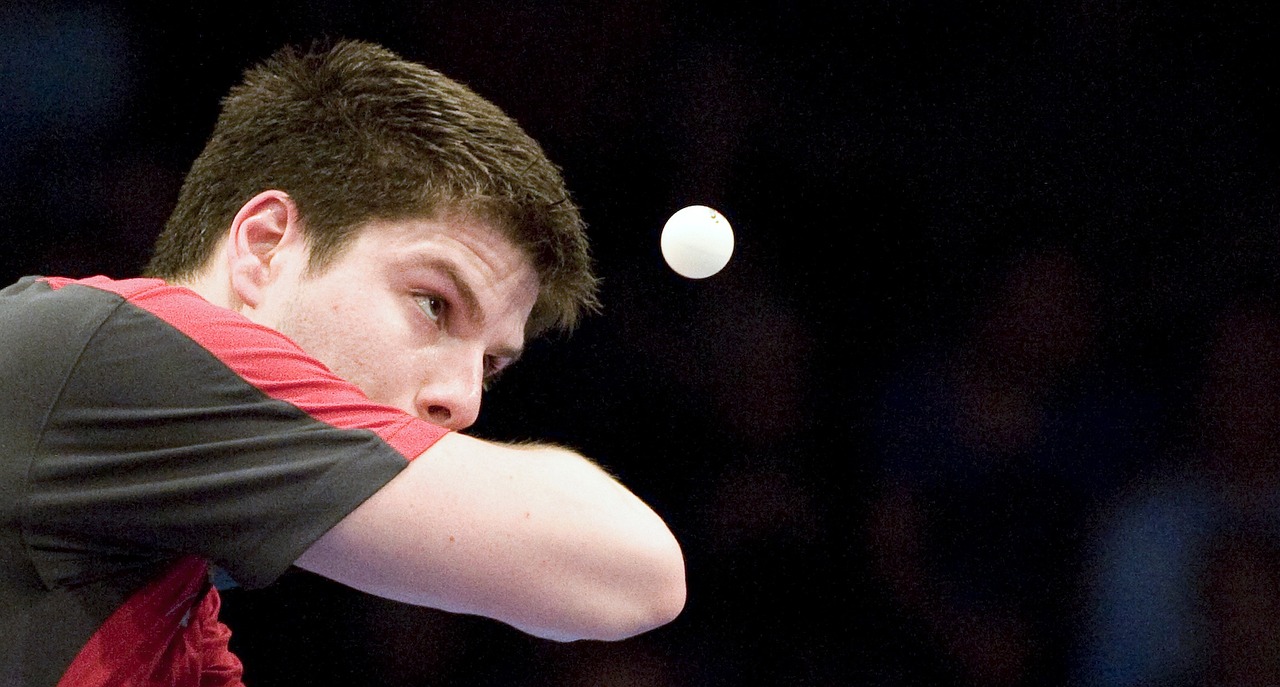
Power Tools
When it comes to building your own wooden bedside tables, can be your best friend. They not only save time but also make the process of cutting, shaping, and assembling much easier. Imagine trying to cut through thick wood with nothing but a hand saw—exhausting, right? That's where power tools come in, providing you with the efficiency and precision needed to create stunning furniture pieces.
First on the list is the power saw. Whether you choose a circular saw or a jigsaw, these tools will help you achieve clean and accurate cuts. A circular saw is perfect for straight cuts on larger pieces of wood, while a jigsaw is ideal for intricate shapes and curves. Just remember to always use the right blade for the type of cut you want to make. Safety should be your priority, so ensure you're wearing protective gear, such as goggles and gloves, when operating these machines.
Next up is the power drill. This versatile tool is essential for creating holes and driving screws. With a variety of drill bits available, you can tackle everything from pilot holes to countersinks. A cordless drill can offer you more flexibility as you move around your workspace, making it easier to reach those tricky spots. Just make sure to keep your drill charged and ready to go!
Another fantastic power tool to consider is the sander. After cutting and assembling your bedside table, you’ll want to smooth out any rough edges. A power sander, whether it’s a random orbital sander or a belt sander, will save you a lot of elbow grease. It allows you to achieve a professional finish in a fraction of the time it would take with sandpaper alone. Remember to start with a coarser grit to remove imperfections, then gradually switch to finer grits for that silky-smooth surface.
Lastly, let’s not forget about the router. This tool can add decorative edges to your bedside table, giving it a unique flair. With various bits available, you can create grooves, patterns, or even cut out designs that reflect your personal style. Just be cautious, as routers can be powerful and require a steady hand to operate effectively.
In summary, investing in a few essential power tools can transform your DIY bedside table project from a daunting task into an enjoyable experience. Here’s a quick overview of the power tools you might consider:
| Power Tool | Function |
|---|---|
| Circular Saw | For straight cuts on large pieces of wood |
| Jigsaw | For intricate cuts and curves |
| Power Drill | For drilling holes and driving screws |
| Sander | For smoothing surfaces and edges |
| Router | For adding decorative edges and grooves |
With these tools at your disposal, you're well-equipped to tackle your bedside table project with confidence. Just remember to prioritize safety and practice using each tool before diving into your build. Happy woodworking!
- What safety precautions should I take when using power tools? Always wear protective gear, including goggles and gloves, and ensure your workspace is clean and organized to prevent accidents.
- Can I use hand tools instead of power tools? Yes, but it will take significantly more time and effort. Hand tools can be a good alternative if you're looking for a more traditional approach.
- What type of wood is best for a bedside table? Hardwoods like oak or maple are durable and aesthetically pleasing, but softwoods like pine can also work well if you prefer a lighter weight and easier handling.
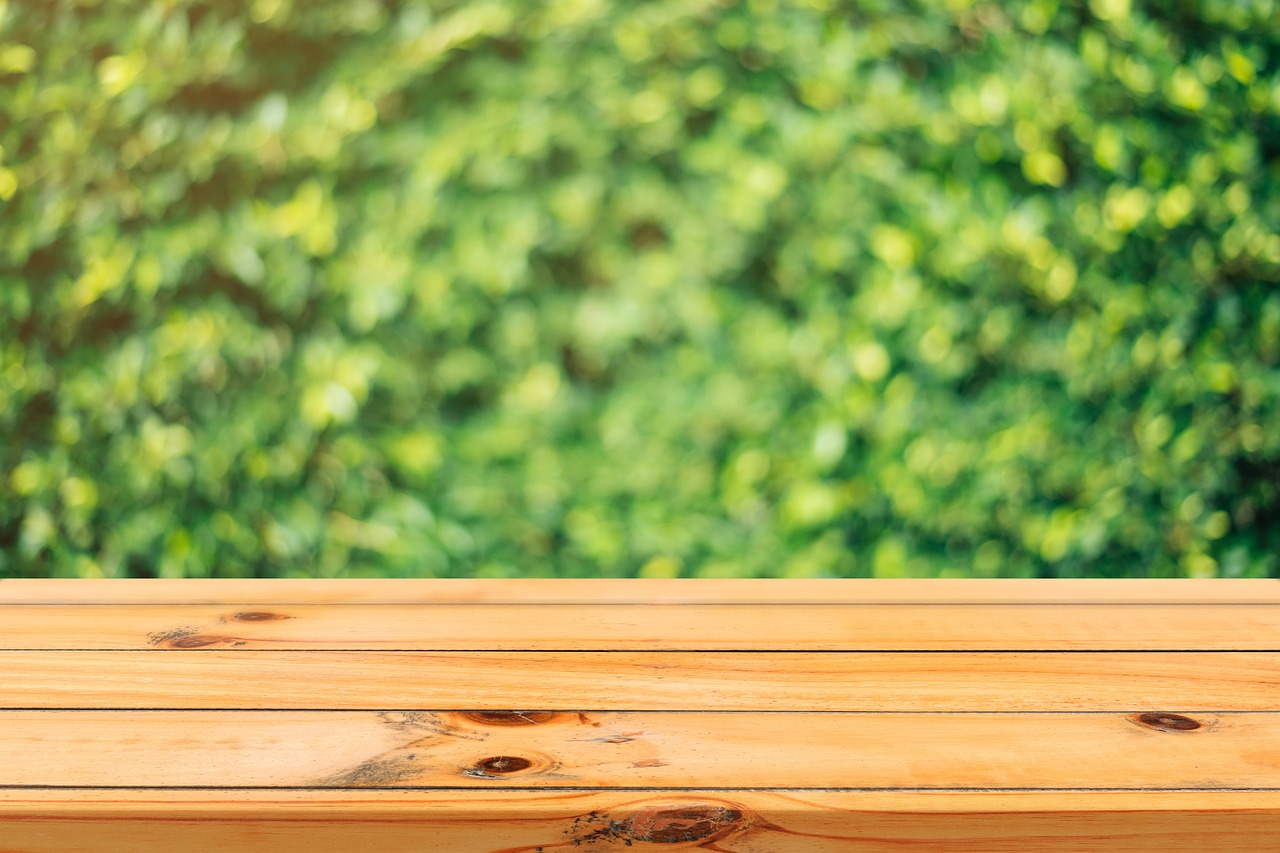
Designing Your Bedside Table
When it comes to , the possibilities are as vast as your imagination! It's not just about having a place to set your lamp or your favorite book; it's about creating a piece that reflects your personal style and enhances your bedroom's aesthetic. Have you ever walked into a room and felt an instant connection to a piece of furniture? That's the magic of a well-designed bedside table! Whether you lean towards a minimalist vibe or prefer something more rustic, the design process is where you can truly express yourself.
First off, consider the style of your bedroom. Is it modern and sleek, or warm and inviting? Your bedside table should complement your existing decor while also standing out as a unique piece. For instance, if your room features clean lines and neutral colors, a bedside table with a simple, contemporary design could be just the ticket. On the other hand, if your space is filled with vintage finds, a distressed wood table with ornate details might be more fitting. Think of your bedside table as the cherry on top of your bedroom sundae!
Now, let’s dive into some style inspirations. Here are a few popular design themes to get your creative juices flowing:
- Modern: Clean lines, geometric shapes, and a minimalist approach.
- Rustic: Natural wood finishes, reclaimed materials, and a cozy feel.
- Industrial: Metal accents, raw wood, and a bit of an edgy vibe.
- Vintage: Ornate carvings, distressed finishes, and a nostalgic charm.
Once you've settled on a style, it’s time to think about customization options. Personalizing your bedside table can make it truly one-of-a-kind. Consider how you might want to customize your piece:
- Color: Will you stick with a natural wood finish, or do you want to paint it a bold hue?
- Finish: A matte finish can give a modern look, while a glossy finish adds sophistication.
- Features: Do you want drawers for storage, or maybe an open shelf for easy access to your favorite bedtime reads?
Additionally, think about the dimensions of your bedside table. It should be proportionate to your bed and other furniture in the room. A table that’s too tall or too short can throw off the balance of your space. A good rule of thumb is to have the top of your bedside table level with the top of your mattress. This way, reaching for that glass of water or your phone in the middle of the night will be a breeze!
In conclusion, designing your bedside table is an exciting opportunity to showcase your style and add functionality to your bedroom. By considering the style, customization options, and dimensions, you can create a piece that not only serves a purpose but also brings joy every time you enter your room. So, grab your sketchbook and let your creativity flow—your perfect bedside table is waiting to be brought to life!
Q: What type of wood is best for a bedside table?
A: The best wood depends on your style and budget. Popular choices include oak for durability, pine for affordability, and walnut for a rich appearance.
Q: Can I use paint instead of stain?
A: Absolutely! Paint can provide a pop of color and cover imperfections, while stain enhances the natural beauty of the wood.
Q: How do I ensure my bedside table is stable?
A: Use proper assembly techniques, such as gluing and screwing joints together, and ensure the legs are even to avoid wobbling.
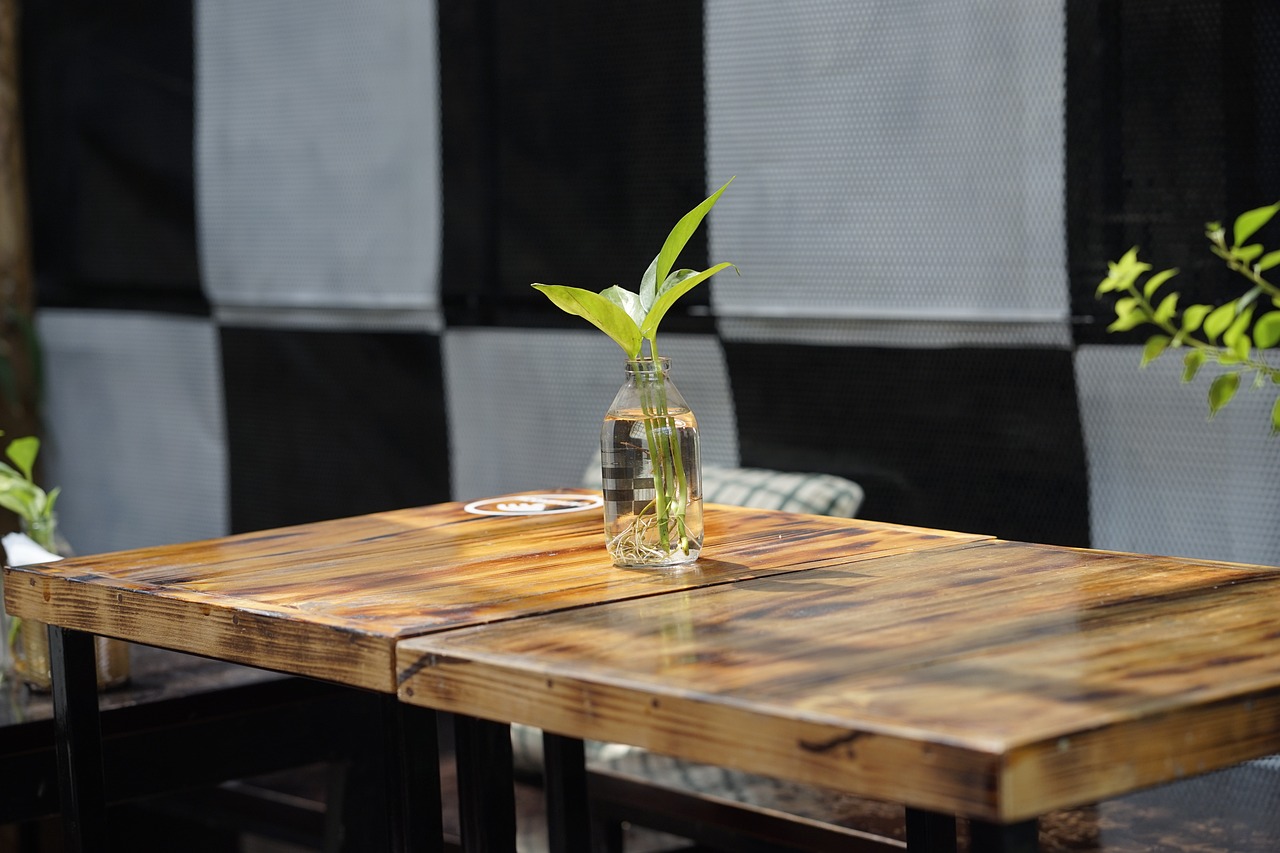
Style Inspirations
This article explores the process of creating stylish and functional wooden bedside tables. Discover design ideas, materials needed, and step-by-step instructions to enhance your bedroom decor with personalized touches.
Selecting the appropriate type of wood is crucial for durability and aesthetics. Learn about various wood options, their characteristics, and how to choose the best one for your bedside table project.
Before starting your DIY project, gather all necessary tools and materials. This section outlines everything you need, from basic tools to finishes, ensuring you are fully prepared to create your bedside table.
Understanding the basic hand tools required for woodworking is essential. This subsection details the must-have tools for cutting, shaping, and assembling your bedside table effectively.
Saws and drills are fundamental for any woodworking project. Explore the different types of saws and drills, along with tips on how to use them safely and efficiently.
Accurate measurements are key to a successful build. This part discusses the measuring tools you’ll need and best practices for ensuring precision in your project.
Power tools can significantly speed up the woodworking process. Discover the power tools that can make your DIY bedside table project easier, along with safety tips for their use.
Creating a design that fits your style and space is important. This section covers various design inspirations, from minimalist to rustic, to help you visualize your ideal bedside table.
When it comes to designing your bedside table, the options are as vast as your imagination. Whether you’re aiming for a modern look, a vintage charm, or an industrial edge, the style you choose can significantly impact your bedroom's overall aesthetic. For instance, a minimalist design can create a serene environment, while a rustic table can add warmth and character.
Here are a few popular styles to consider:
- Modern: Clean lines, sleek surfaces, and a focus on functionality define modern bedside tables. Think about incorporating materials like metal and glass for a contemporary touch.
- Vintage: Vintage-style tables often feature intricate carvings and distressed finishes, giving them a timeless appeal. Consider using reclaimed wood to enhance that nostalgic vibe.
- Industrial: If you love the urban chic look, an industrial bedside table with raw wood and metal accents can be a striking choice. This style often embraces imperfections, making it unique.
Moreover, don’t shy away from mixing and matching styles. A blend of modern and rustic elements can create a stunning focal point in your bedroom. Imagine a sleek modern table paired with a vintage lamp – it’s all about balance and personal expression!
Ultimately, your bedside table should not only reflect your personal taste but also complement the overall decor of your room. Take your time to explore different designs and visualize how each style can enhance your space.
This section provides a detailed guide on how to build your bedside table from start to finish. Follow these steps to successfully create a beautiful piece of furniture.
Preparation is vital for a smooth building process. This subsection explains how to cut, sand, and treat the wood before assembly, ensuring a professional finish.
Proper assembly techniques are essential for stability and aesthetics. Discover various methods for joining pieces together, including gluing, nailing, and screwing.
Adding the right finish can enhance the beauty of your bedside table. This section discusses different finishing techniques and products to protect and beautify your creation.
Staining and painting can dramatically change the look of your bedside table. Learn about the best practices for applying stains and paints for a flawless finish.
Sealing your bedside table is crucial for durability. This part covers the importance of sealing and the types of sealants available to protect your wood from wear and tear.
Q: What type of wood is best for a bedside table?
A: Popular choices include oak, maple, and pine, each offering different aesthetics and durability. Choose based on your style preference and budget.
Q: Can I use recycled wood for my DIY project?
A: Absolutely! Recycled wood can add character and is often more environmentally friendly.
Q: How do I ensure my bedside table is sturdy?
A: Use proper assembly techniques and quality materials. Reinforce joints with screws or brackets for added stability.

Customization Options
When it comes to crafting your own bedside table, the sky's the limit in terms of customization. Personalizing your piece not only enhances its functionality but also allows it to reflect your unique style. Whether you want to go bold with colors or keep it subtle with natural finishes, every choice you make contributes to the overall aesthetic of your bedroom. Think of your bedside table as a canvas where you can express your creativity and taste.
One of the first decisions you'll face is the color of your bedside table. Do you envision a serene white that complements your soft linens, or perhaps a deep navy that adds a touch of sophistication? The color you choose can dramatically alter the mood of your space. For those who prefer a more natural look, consider leaving the wood in its raw state or applying a clear coat to showcase its grain. You could even explore trendy techniques like ombre or distressing to give your table a vintage vibe.
In addition to color, the finish plays a crucial role in the overall appearance and durability of your bedside table. Here are a few options to consider:
- Matte Finish: Offers a soft, non-reflective surface that feels modern and understated.
- Satin Finish: Provides a subtle sheen, balancing elegance and practicality.
- Glossy Finish: Adds a high-shine look that can make colors pop and is easier to clean, but may highlight imperfections.
Don't forget about added features that can enhance functionality. Think about whether you want drawers for extra storage or open shelves for displaying books and decorative items. Adding a small drawer can be a game-changer for keeping your nighttime essentials organized, while a shelf can serve as a perfect spot for a lamp or a plant. You could also incorporate built-in charging stations for your devices, making your bedside table not just a piece of furniture, but a hub of convenience.
Lastly, consider how you can mix and match materials for a truly unique look. Combining wood with metal elements, such as legs or handles, can create a striking contrast that elevates your design. Picture a rustic wooden top paired with sleek metal legs—this fusion can add depth and interest to your bedside table. Don't hesitate to experiment with different textures and materials to achieve a look that is distinctly yours.
Q: Can I use reclaimed wood for my bedside table?
A: Absolutely! Reclaimed wood adds character and a unique story to your piece. Just ensure it’s properly treated to avoid any issues with pests or decay.
Q: How do I choose the right size for my bedside table?
A: Consider the height of your bed and the space available. Ideally, your bedside table should be about the same height as your mattress for easy access to items.
Q: What type of finish is best for a bedside table?
A: It depends on your style and needs. If you want something low-maintenance, a glossy finish might be best. For a more natural look, a matte or satin finish could be ideal.
Q: Can I change the design later?
A: Yes! One of the great things about DIY furniture is that you can always repaint or refinish it if your style changes over time.
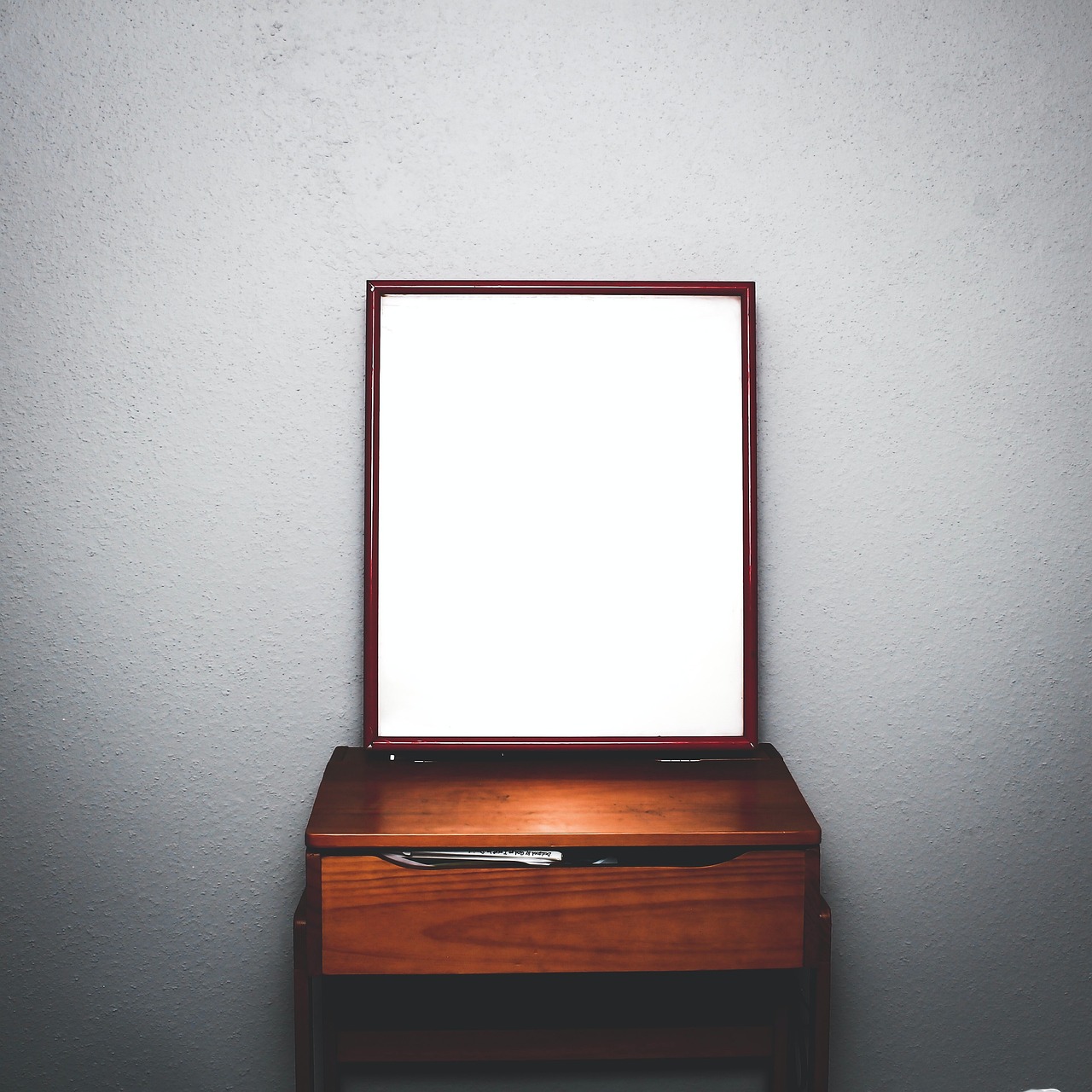
Step-by-Step Building Process
Building your own wooden bedside table can be a rewarding experience that not only enhances your bedroom decor but also gives you a sense of accomplishment. The process may seem daunting at first, but by breaking it down into manageable steps, you can create a stunning piece of furniture that reflects your personal style. Let’s dive into the detailed guide that will walk you through each phase of the building process, ensuring that you achieve a beautiful and functional bedside table.
The first step in this journey is to prepare your workspace. Make sure you have a clean, well-lit area where you can work comfortably. Having all your tools and materials within reach will help streamline the process. Once your workspace is set up, it’s time to prepare the wood. This involves cutting the wood to your desired dimensions, sanding it down to create a smooth surface, and treating it to prevent any issues down the line.
Next, you’ll want to assemble the pieces. This is where your design comes into play. Depending on your chosen style, you may have different pieces to join together. For example, if you're building a simple cube-style table, you’ll have four sides and a top to connect. The assembly techniques can vary, but here are some common methods:
- Gluing: Use wood glue to bond surfaces together. This method is great for providing a strong, invisible joint.
- Nailing: For quick assembly, nails can be used, but be cautious as they may split the wood if not done carefully.
- Screwing: Screws offer a robust connection and are especially useful for heavier pieces.
Once the assembly is complete, it’s essential to check for stability. Make sure everything is aligned correctly and that the table feels solid. If needed, you can add additional support with corner brackets or extra screws. Now, let’s move on to the finishing touches. This is where your bedside table will truly come to life!
After ensuring the structure is stable, it’s time to focus on the aesthetics. You can choose to stain or paint your bedside table to match your bedroom decor. When applying stains, it’s important to use a clean cloth and apply it evenly to avoid blotches. If you prefer paint, consider using a primer first for better adhesion and durability. Remember, the goal is to enhance the natural beauty of the wood while also protecting it.
Finally, don’t forget about sealing your masterpiece! Applying a sealant will protect your bedside table from scratches, moisture, and daily wear and tear. There are various types of sealants available, including polyurethane and water-based finishes, each providing different levels of protection and sheen. Follow the manufacturer’s instructions for the best results.
In summary, the step-by-step process of building your wooden bedside table involves careful preparation, assembly, and finishing. By following these guidelines, you’ll not only create a functional piece of furniture but also add a personalized touch to your bedroom.
Q1: What type of wood is best for a bedside table?
A: Popular choices include pine for its affordability, oak for durability, and walnut for its rich color. Choose based on your budget and desired aesthetic.
Q2: How long does it take to build a bedside table?
A: The time can vary, but generally, you can expect to spend a few hours to a couple of days, depending on your experience and the complexity of the design.
Q3: Can I customize the size of my bedside table?
A: Absolutely! One of the benefits of DIY is that you can tailor the dimensions to fit your specific space and needs.
Q4: What safety precautions should I take while using power tools?
A: Always wear safety goggles, use ear protection, and ensure your workspace is free from hazards. Familiarize yourself with the tools before use.

Preparing the Wood
Preparing the wood is a fundamental step in the DIY process of creating your bedside table. Think of this stage as the foundation of a house; if it's not solid, everything built on top will be shaky. First, you'll want to select your wood carefully. Choose pieces that are free from knots and warping, as these imperfections can affect both the aesthetics and durability of your final product. Once you have your wood, it's time to cut it to size. Use a saw to make precise cuts based on your design measurements, ensuring that each piece fits together snugly.
After cutting, the next step is sanding. This is where the magic happens! Sanding smooths out any rough edges and surfaces, making your bedside table not only look good but also feel great to the touch. Start with a coarser grit sandpaper to remove any major imperfections, and then gradually move to a finer grit for a polished finish. Remember, patience is key here; rushing through the sanding process can lead to a less-than-perfect surface. If you're unsure about the sanding process, consider using an orbital sander for a more even finish.
Once sanding is complete, you should treat the wood to protect it from moisture and wear. Applying a wood conditioner is a smart move, especially if you're planning on staining your bedside table. This conditioner helps the stain absorb evenly, preventing blotches and ensuring a beautiful finish. After the conditioner has dried, you can move on to staining or painting your wood. Choose a stain that complements your bedroom decor, and apply it with a brush or cloth, following the wood grain for the best results.
Finally, don’t forget to seal your wood after staining or painting. A good sealant will protect your bedside table from scratches, spills, and daily wear and tear, ensuring it remains a stunning centerpiece in your bedroom for years to come. Use a clear polyurethane or a similar product for optimal protection. With these steps, your wood will be perfectly prepared, setting you up for a successful and enjoyable building experience.
- What type of wood is best for a bedside table? Hardwoods like oak, maple, or walnut are excellent choices due to their durability and aesthetic appeal.
- Do I need to treat the wood before staining? Yes, applying a wood conditioner before staining helps achieve a more even color.
- How long should I let the stain dry? It typically takes about 24 hours for stain to dry completely, but always check the manufacturer's instructions.
- Can I use a power sander instead of hand sanding? Absolutely! A power sander can save time and provide a more uniform finish.

Assembly Techniques
When it comes to assembling your DIY wooden bedside table, the techniques you choose can make all the difference between a sturdy piece and a wobbly nightmare. Think of assembly as the backbone of your project; without it, your beautiful design is just a pile of wood. The primary methods for joining your pieces together include gluing, nailing, and screwing, each with its own set of advantages that cater to different needs and styles.
First up, gluing is a fantastic option for those who want a seamless look. Wood glue creates a strong bond that can be stronger than the wood itself when done correctly. To achieve the best results, apply glue evenly on the surfaces to be joined, and use clamps to hold them together while the glue dries. This method is especially useful for joints that won’t be visible, such as the corners of your bedside table.
Next, let’s talk about nailing. Nails are quick and effective, perfect for those who may not have the patience for glue to set. You can use a hammer or a nail gun for this technique, but be cautious—too much force can split the wood. A good rule of thumb is to pre-drill your nail holes to avoid any mishaps. This method works wonders for attaching the tabletop to the legs or securing shelves in place.
Then we have screwing, which provides a solid and adjustable connection. Screws are particularly advantageous because they can be removed and replaced without damaging the wood. When using screws, make sure to countersink them, which means drilling a shallow hole for the screw head to sit below the surface. This not only enhances the aesthetic but also prevents snagging. For larger pieces, consider using wood screws that are long enough to penetrate deeply into the wood for maximum stability.
Now, if you're feeling adventurous or want to add a bit of flair, you can combine these methods for optimal strength and appearance. For instance, you might glue the joints for a seamless look and then reinforce them with screws for added durability. Just imagine your bedside table standing tall and proud, a masterpiece of your craftsmanship!
In conclusion, the assembly techniques you choose will dictate the longevity and sturdiness of your bedside table. Whether you go for the finesse of glue, the speed of nails, or the strength of screws, ensure that you’re attentive to detail. After all, a well-assembled piece not only serves its purpose but also adds a unique touch to your bedroom decor.
- What type of glue should I use for wood projects?
Use a high-quality wood glue, such as PVA (polyvinyl acetate) glue, which is specifically designed for woodworking.
- Can I use nails instead of screws?
Yes, nails can be used, but screws provide a more secure and adjustable connection.
- How do I prevent wood from splitting when nailing?
Pre-drilling your nail holes is the best way to prevent splitting. It allows the wood to accommodate the nail without cracking.
- Is it necessary to use clamps when gluing?
Yes, clamps help hold the pieces together while the glue dries, ensuring a strong bond.
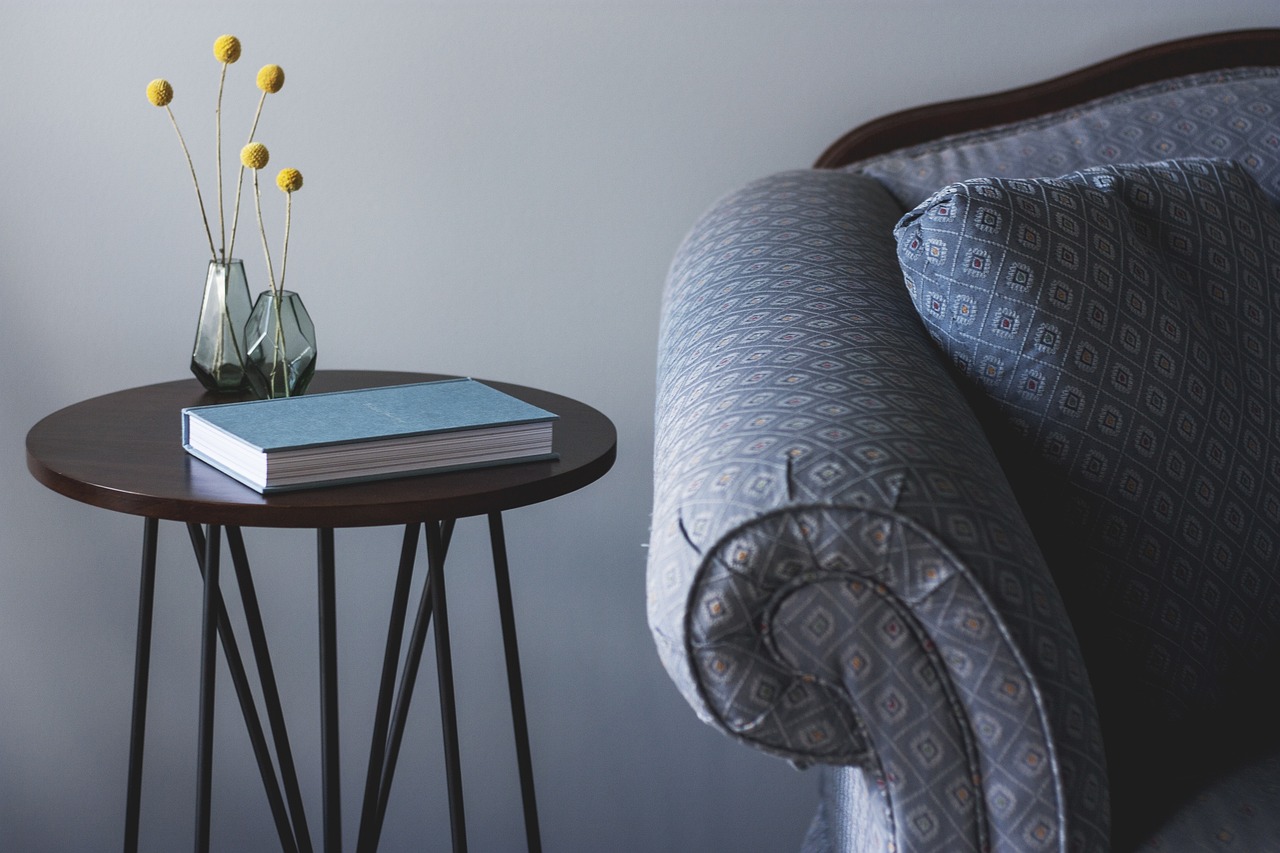
Finishing Touches
When it comes to crafting your DIY wooden bedside table, the are what truly elevate your piece from ordinary to extraordinary. Just like a painter adds the final strokes to a masterpiece, you’ll want to ensure that your bedside table not only looks stunning but also stands the test of time. In this section, we’ll explore various finishing techniques that can enhance the beauty of your creation while protecting it from wear and tear.
One of the first decisions you’ll need to make is whether to stain or paint your bedside table. Both options have their unique advantages. Staining allows the natural grain of the wood to shine through, adding depth and character to your piece. On the other hand, painting opens up a world of color possibilities, letting you match your bedside table to your bedroom decor. If you’re unsure which route to take, consider the overall aesthetic of your bedroom. A minimalist space might benefit from a sleek, painted finish, while a rustic room could shine with a rich wood stain.
Applying stain or paint requires a bit of finesse, but with the right techniques, you can achieve a flawless finish. Start by preparing your surface – this means sanding down any rough edges and ensuring the wood is clean and free of dust. For staining, use a brush or cloth to apply the stain evenly, working in the direction of the wood grain. Allow it to penetrate for a few minutes before wiping off the excess with a clean cloth. If you’re going for a painted finish, consider using a primer first to help the paint adhere better and enhance the color's vibrancy. Apply multiple thin coats of paint, allowing each layer to dry completely before adding the next.
Once you’ve achieved your desired look, it’s crucial to seal your bedside table to protect it from daily wear and tear. This is especially important if you plan to place items like drinks or books on it, as spills and scratches can quickly mar your handiwork. There are several types of sealants available, including polyurethane, varnish, and lacquer. Each offers different levels of protection and finishes. Polyurethane is a popular choice for its durability and water resistance, while lacquer provides a high-gloss finish that can make your piece pop.
To apply a sealant, use a clean brush and apply it in thin, even coats. Be sure to follow the manufacturer's instructions regarding drying times and the number of coats needed for optimal protection. Once your sealant has dried, you can enjoy your new bedside table, knowing it’s not only beautiful but also well-protected against the rigors of daily life.
Q: How long does it take for stain or paint to dry?
A: Drying times can vary depending on the product used, but generally, you should allow 2-4 hours for stain to dry and 24 hours for paint between coats.
Q: Can I use leftover paint or stain from other projects?
A: Yes, as long as the paint or stain is still good and matches your desired finish, it can be a great way to save on materials.
Q: How can I maintain the finish on my bedside table?
A: Regularly dusting and using coasters for drinks can help maintain the finish. If you notice wear, you can lightly sand and reapply the sealant as needed.
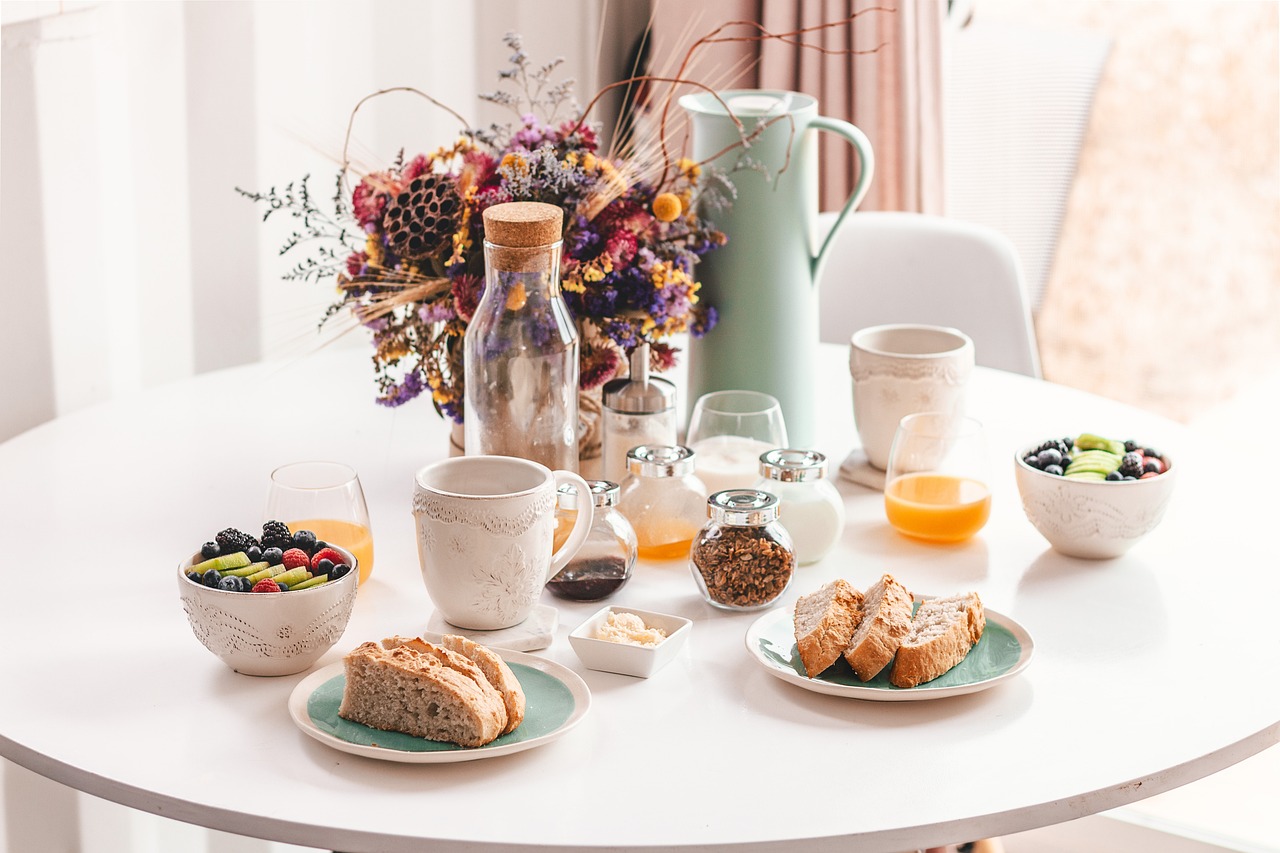
Staining and Painting
Staining and painting your wooden bedside table can transform it from a simple piece of furniture into a stunning focal point in your bedroom. The choice between staining and painting often depends on the look you want to achieve and the type of wood you’re using. Stains enhance the natural grain of the wood, adding depth and richness, while paint offers a bold, uniform color that can complement or contrast with your existing decor.
When you decide to stain your bedside table, it's essential to choose the right stain. There are two main types of stains: oil-based and water-based. Oil-based stains penetrate deeper into the wood, providing a longer-lasting finish, while water-based stains dry faster and have less odor. Here’s a quick comparison:
| Type of Stain | Drying Time | Durability | Odor |
|---|---|---|---|
| Oil-Based | 6-8 hours | High | Strong |
| Water-Based | 1-2 hours | Moderate | Low |
Before applying your chosen stain, make sure to prepare the surface of your bedside table properly. Start by sanding the wood with fine-grit sandpaper to create a smooth surface. This step is crucial because it helps the stain adhere better and ensures an even application. After sanding, clean the surface with a damp cloth to remove any dust particles.
Once your table is prepped, apply the stain using a clean cloth or a brush, working in the direction of the wood grain. It's best to apply a thin coat and let it sit for a few minutes before wiping off the excess with a clean cloth. This technique allows you to control the darkness of the stain. If you desire a deeper color, you can apply additional coats, allowing each layer to dry completely before adding the next.
On the other hand, if you opt for painting, the process is slightly different but equally rewarding. Choose a high-quality primer to ensure the paint adheres well and covers any imperfections. After priming, you can select your paint color. For a modern look, consider using chalk paint, which provides a matte finish and can be distressed for a vintage feel. Alternatively, acrylic paints are great for a glossy finish that’s easy to clean.
When painting, apply the primer first and let it dry thoroughly. Then, use a brush or roller to apply your paint in even strokes. Depending on the color and type of paint, you may need two or three coats for complete coverage. Don’t forget to let each coat dry completely before applying the next. Once you’re satisfied with the color, finish with a clear sealant to protect your painted surface from scratches and stains.
In summary, whether you choose to stain or paint your bedside table, both methods offer unique benefits and can dramatically enhance the overall look of your bedroom. Take your time to select the right materials and techniques, and you'll create a beautiful, personalized piece that reflects your style.
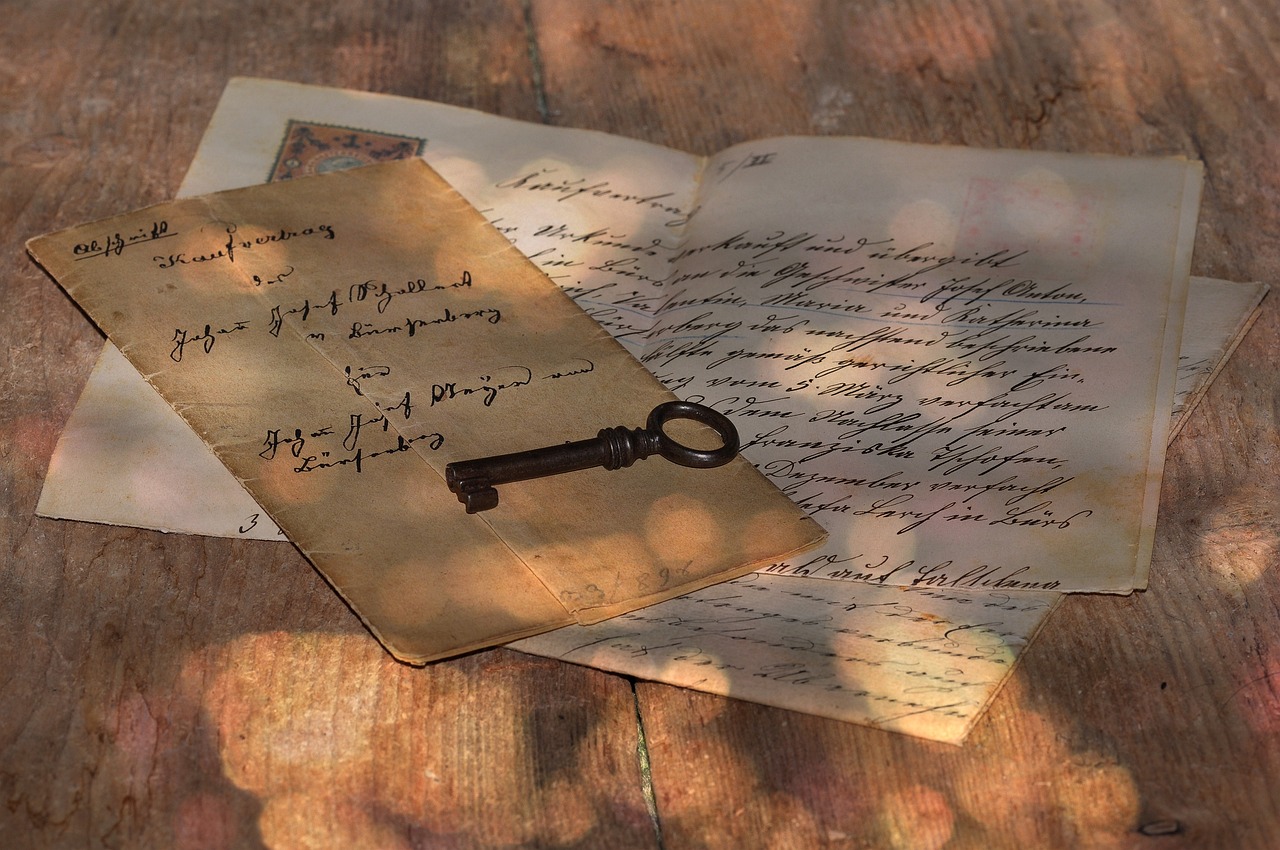
Sealing and Protecting
Sealing your bedside table is crucial for ensuring its longevity and maintaining its aesthetic appeal. Think of the sealant as the armor that protects your creation from the daily wear and tear it will face in your bedroom. Whether it’s the occasional coffee spill, the scratches from a book, or the humidity in the air, a good sealant will act as a barrier, keeping your wooden masterpiece safe and sound.
When it comes to choosing the right sealant, you have a few options. Each type of sealant offers different benefits, and understanding these can help you make the best choice for your project. Here’s a quick rundown of some popular sealants:
| Sealant Type | Benefits | Best Used For |
|---|---|---|
| Polyurethane | Durable, water-resistant, and available in different finishes | High-traffic areas and surfaces prone to spills |
| Varnish | Provides a hard finish and enhances the wood's natural beauty | Decorative pieces and low-traffic surfaces |
| Shellac | Quick-drying and easy to apply, with a warm finish | Indoor furniture and decorative items |
| Wax | Natural look and feel, easy to reapply | Low-traffic areas and pieces that require frequent touch-ups |
Before applying any sealant, ensure that your bedside table is completely clean and free of dust. A smooth surface is key to achieving a flawless finish. If you’ve previously stained or painted your table, allow it to dry thoroughly before moving on to sealing. This step is essential; otherwise, you risk trapping moisture and compromising the finish.
Application methods can vary based on the type of sealant you choose. For example, polyurethane can be applied using a brush or a foam applicator, while wax may be better suited for a soft cloth. Always follow the manufacturer’s instructions for the best results. And remember, patience is a virtue! Allow each coat to dry fully before applying the next one, as this will ensure a strong protective layer.
Lastly, maintenance is key to prolonging the life of your bedside table. Regularly check the sealant for any signs of wear and reapply as necessary. This not only keeps your table looking great but also extends its lifespan, allowing you to enjoy your DIY creation for years to come.
- How often should I reapply the sealant? It depends on the usage and the environment. Typically, every 1-3 years is a good rule of thumb.
- Can I use a sealant on painted surfaces? Yes, but ensure the paint is fully cured before applying the sealant to avoid issues.
- What's the best way to clean my sealed bedside table? Use a soft cloth and mild soap; avoid harsh chemicals that can damage the sealant.
Frequently Asked Questions
- What type of wood is best for making bedside tables?
Choosing the right wood can make all the difference! Hardwoods like oak, maple, or cherry are excellent choices for durability and aesthetics. If you're going for a more budget-friendly option, pine is also a great choice. Just remember, the wood you select should match your style and be able to withstand daily use.
- What tools do I need to build a bedside table?
Before you dive into your DIY project, gather some essential tools! You'll need basic hand tools like a saw, hammer, and screwdriver, along with measuring tools for accuracy. Power tools like drills and sanders can also speed up the process. Having the right tools on hand will make your project smoother and more enjoyable.
- Can I customize my bedside table?
Absolutely! Customization is what makes your bedside table uniquely yours. You can choose the color, finish, and even add features like drawers or shelves. Think of it as a blank canvas where you can express your style and make it fit perfectly with your bedroom decor.
- What are the steps to build a bedside table?
The process is quite straightforward! Start by preparing your wood—cutting, sanding, and treating it for a smooth finish. Then, assemble the pieces using techniques like gluing or nailing. Finally, apply your chosen finish to protect and enhance the look of your table. Just take it step by step, and you'll have a beautiful piece of furniture in no time!
- How do I finish my bedside table?
Finishing your bedside table is crucial for both aesthetics and durability. You can choose to stain or paint it, depending on the look you want. After that, applying a sealant will protect the wood from scratches and wear. Think of it as giving your table a protective armor that enhances its beauty!







